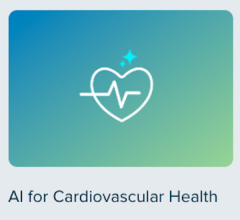
Heart disease is the number 1 killer of women and men according to the Centers for Disease Control and Prevention (CDC).
Women's heart health continues to grow as an awareness topic among the general public, and behind the scenes physicians and medical companies are working furiously not only to determine the difference between male and female cardiology, but to find better ways to prevent, diagnose and treat cardiac disease.
According to the American Heart Association, almost twice as many women in the U.S. die of heart disease and stroke than all forms of cancer combined.
A study conducted last July by the Healthy From the Heart campaign, sponsored by Cordis Corp. and the National Women's Health Resource Center, showed only 55 percent of women over 35 feel they understand how to treat heart disease. Those at highest risk — Hispanic and African American women — were more than twice as likely to say they didn't know any treatments for the disease. The campaign aims to go a step further than most, not just educating women about heart disease, but also teaching them about treatment options.
Juan Pastor Cervantes, M.D., an interventional cardiologist at Memorial Regional Hospital (Miami, FL), said he was surprised so little is known about treatment of coronary artery disease (CAD). Dr. Cervantes, who is working with the Healthy From the Heart campaign, said he is seeing some progress in education and awareness.
“There is a lot of work to be done and continues to be done in this arena,” Dr. Cervantes said. “This campaign has to continue indefinitely to change the outcomes of cardiovascular disease in this country as well as the entire world.”
Alexandra Lansky, M.D., director of Clinical Services at New York-Presbyterian Hospital/Columbia's Center for Interventional Vascular Therapy, is pursuing gender-based outcomes research and education in interventional cardiology and prevention. She has authored and co-authored more than 100 academic peer-review manuscripts and book chapters in the area of women's cardiovascular health and is medical director of HeartHealthyWomen.org.
The Web site provides sections for both patients and physicians. The goals of the site are to provide healthcare professionals with up-to-date information on cardiovascular disease in women by combing through research most relevant to them. The site also strives to address gender and racial disparities in diagnosing and treating cardiovascular disease and increase the number of women participating in clinical trials.
The patient portion of the site not only focuses on signs, symptoms, risk factors and preventions, it also provides information on clinical trials that may pertain to women.
While many campaigns strive to teach women how to live a healthier lifestyle to avoid future heart complications, awareness of options for those at risk is also an important key to education, Dr. Cervantes said.
“Prevention is just part of the equation, but certainly symptom awareness and treatment options need to be known by the general population to decrease the tragic statistics seen over the last 20 years,” he said.
Deadly Disparity
A study published in the November Journal of the American College of Cardiology (JACC), authored by Sonia S. Anand, M.D., Ph.D., associate professor of Medicine at McMaster University in Hamilton, Ontario, Canada, showed women with acute coronary syndromes are almost one-third less likely to get invasive treatments compared to men with the same condition.
The results of the study of more than 12,000 people showed women, especially those at high risk, aren't receiving the recommended treatment for patients with acute coronary syndromes, according to Dr. Anand.
As a follow-up, Dr. Anand is working through several studies to attempt to find the cause of the disparity. One includes an online survey of physicians that will attempt to determine whether physicians would treat identical patients differently depending on gender.
The Women's Ischemia Syndrome Evaluation Study (WISE), a multicenter, long-term investigation sponsored by the National Heart, Lung and Blood Institute, is looking at ways women's heart disease differs from men's. One problem, according to the study, is that equipment developed to diagnose men is being used on women and often missing the differences.
In women, two dysfunctions — one in cells lining coronary arteries and another in the tiny vessels branching within the heart — are combining to deprive the heart muscle of oxygen. This suggests that functional rather than structural problems may define women's heart disease, according to the study.
The WISE study also shows that women's symptoms are different, such as fatigue, sleep disturbance and shortness of breath. The study’s researchers recommend that clinicians become more aware and aggressive in investigating these early complaints.
Detection of CAD should be an easy task nowadays, according to Dr. Cervantes.
“If we as physicians listen to patient history, perform an adequate physical examination and obtain pertinent noninvasive testing such as electrocardiography, stress test, echocardiography, nuclear imaging, electron beam computed tomography or computed tomography angiography, early signs of CAD can be appropriately identified, and as a result improved outcomes can be obtained,” he said.
Layers of Issues in Diagnosing Women With Heart Disease
Biological and psychological differences aside, Dr. Cervantes said a major problem with the female group also exists in their tendency to care for others before themselves.
Mimi S. Biswas, M.D., a cardiologist by training and a faculty team member at Duke University Medical Center, agrees that a portion of the responsibility lies not only with the physicians but also with the patients. Many women are busy having children, working and taking care of families, and there is often a large gap between the time of feeling symptoms and going to see their physician. Dr. Biswas suggested that in addition to asking if they have had a breast exam or PAP test, doctors should be asking female patients about screening for heart disease.
Because of the unique structures of a woman's body, there are other potential complicating factors. New studies released by Duke University Medical Center and the Durham Veterans Administration Medical Center in North Carolina show that women who have experienced pregnancy complications were more likely to have CAD, an increased risk of cardiac episodes and mortality.
According to Dr. Biswas, who participated in the study with several other physicians, the Duke University Medical Center databases were cross referenced for pregnancy complications as well as CAD, and it was found that women with pregnancy complications are 1.6 times more likely to develop CAD. Of the 404 women studied, Dr. Biswas said many were pregnant around age 27 or 28, had a myocardial infarction (MI) in their early 40s and 10 percent of those women had died from a cardiac episode by age 42.
While diabetes and hypertension were also factors, Dr. Biswas said smoking before or during a pregnancy is also believed to be a major factor increasing a woman's chances of future CAD almost three fold.
“I didn't expect deaths that early in lives,” Dr. Biswas said. “I thought estrogen protected from that. Usually you would see MIs in women in their 60s after menopause. This singles out a different population for treatment.”
The exciting part, Dr. Biswas said, is the follow-up work being put into place, including a system at Duke that will set up referrals for those at high risk in an effort to prevent the progression of disease.
Dr. Biswas said, as they did in 2004, Duke physicians will pull journals and compile information to present to the ACC and other agencies, providing valuable information for updating prevention guidelines for 2007.
“Hopefully they will add pregnancy complications as a red flag, as a risk for coronary disease,” she said.
Creating Change
As the knowledge base continues to grow, it is helping to feed changes in the medical field in terms of technologies and equipment used to diagnose and treat women with heart disease.
Dr. Biswas said one progression is in the size and caliber of items, such as stents and catheters based on women's measurements. Another is in weight-based dosing, which prevents overdosing treatments in women. Dr. Cervantes said current therapies, including antiplatelet agents like aspirin, lipid lowering agents like statins, ACE inhibitors and Beta blockers have reduced the mortality associated with CAD.
One of the findings of the WISE study showed that the use of nuclear-based heart studies, such as nuclear SPECT (single-photon emission computed tomography) imaging, has resulted in vast improvement in diagnostic accuracy for women.
Acknowledging the differences in diagnosing women versus men, the WISE study also states that alternatives for recognizing unique risk factors are being evaluated, such as high-sensitivity C-reactive protein (a laboratory test that detects inflammatory processes), hemoglobin monitoring, retinal artery narrowing examinations and coronary calcification tests.
“Over the last two decades we have seen an increased number of deaths in the female group and a decreasing number of deaths in the male group, due in part to the advances of medical therapy and the results of many studies that have targeted mainly the male group,” Dr. Cervantes said. “However, the same results have now been validated for the female group, giving us the opportunity to match the results obtained with the male group.”
The goal is to move forward with education of the general public while continuing to work on discoveries, treatments and innovations focusing on women, improving on statistics showing heart disease as the No. 1 killer of women.
Read the 2018 article "Diagnostic Differences in Women’s Heart Health."
Jody Paige is a free-lance reporter in Downers Grove, IL. She can be reached at [email protected].



 September 11, 2025
September 11, 2025 









